While many coaster enthusiasts long for every new roller coaster built to be more of the tallest, fastest, longest, and “most extreme” creations (and in several cases, they get what they want!), in recent years, a number of more “family friendly” roller coasters have opened, leading us to wonder if we’re in the middle of a family coaster renaissance, at least in North America.
The Coaster Wars
From the late 1980’s through the mid-2000’s, amusement parks and ride manufacturers would constantly push the limits of what was possible in roller coaster design, looking to create what we’ve grown to call “-Est” coasters at Coaster101– the tallEST, the fastEST, the longEST.
If you need proof – keep in mind that the first roller coaster to reach 100’ tall – the Revere Beach Cyclone – opened in 1925. It would take nearly 65 years for Cedar Point to be the first park cross the 200’ barrier with Magnum-XL 200 in 1989, and it only sped up from there. It took just eleven more years for the park to cross the 300’ threshold with Millennium Force in 2000, and just three years later, they would cross the 400’ barrier with the introduction of Top Thrill Dragster in 2003.
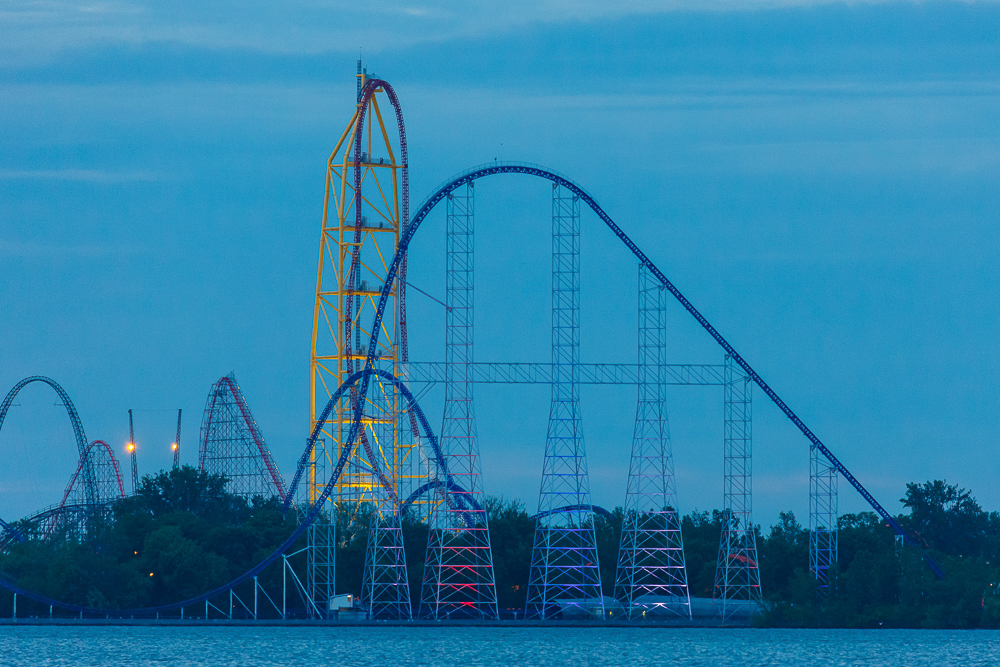
Magnum XL-200, Millennium Force and Top Thrill Dragster at Cedar Point – the World’s First 200′, 300′ and 400′ tall roller coasters.
At the same time as the major thrilling coasters were opening, a number of smaller roller coasters, mostly with 36″ height requirements, opened alongside their taller counterparts, but there wasn’t a ton of roller coasters built during that time for the age and height gap between a “kiddie” coaster (36″) and “thrill” coaster. (48″+)
What is a family coaster?
While they’re not a “new” type of coaster concept – RCDB lists 336 “Family” coasters in North America that are either currently operating or under construction – it’s important to come up with a definition of what exactly constitutes a “family” coaster. Coasterpedia.net defines a family roller coaster as a “medium-sized roller coaster made so that people of almost all sizes and ages can ride and enjoy.” More often than not, these coasters are good “gateway” or “stepping stone” coasters that are a step above a “kiddie” coaster, but often lack the speed, height, and inversions that you might find on a more thrilling coaster.
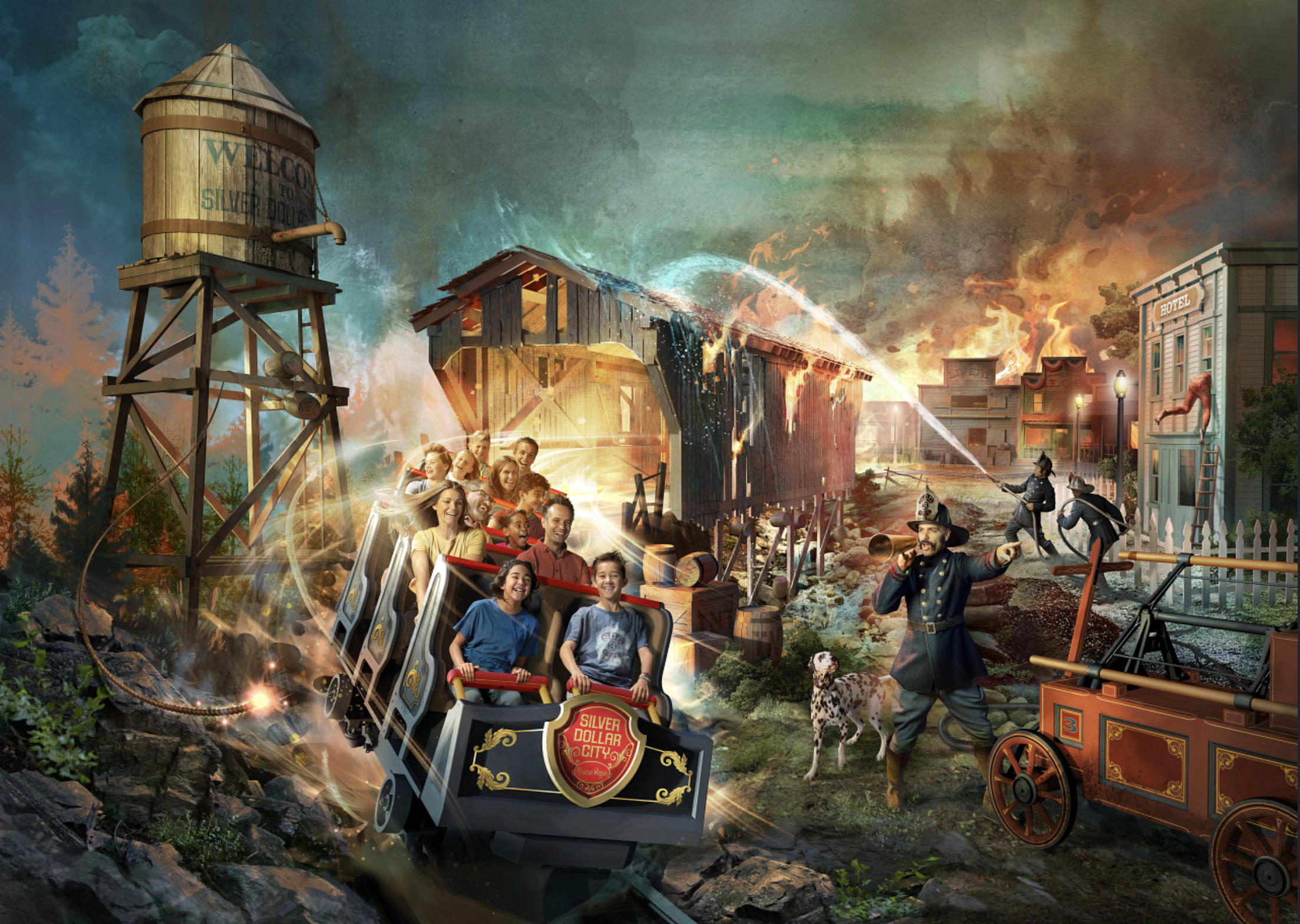
Concept Art for Fire In The Hole at Silver Dollar City
While the height requirement on a “family” roller coaster can vary from park to park and manufacturer to manufacturer, we think a fair “sweet spot” for minimum height requirements in the “family coaster” demographic is somewhere between 39” to 44”, meaning almost anyone from the age of “tall toddler” and older can ride the attraction.
Change In Times
Depending on how you view the numbers, there are several key time frames that are focal points of family coasters in North America. From 2000-2008, while an average of 38 coasters opened each year in North America, slightly less than 30% of those new coasters were considered “family coasters.” There were just two years when family coasters made up more than 35% of new coasters opened on the continent – 2004 and 2005, where it was 36.9% and 35.7% (17/46 and 10/28, respectively.)
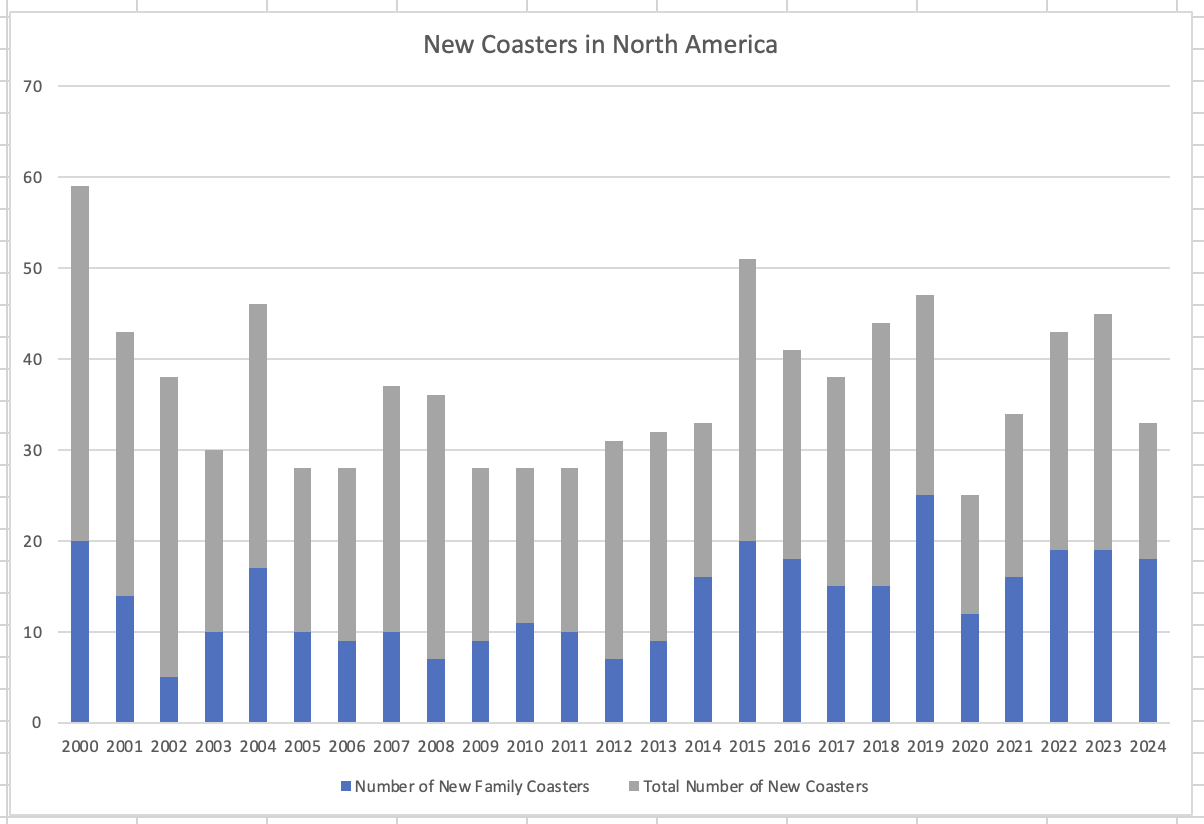
As the world fell victim to the “great recession” in 2008, fewer roller coasters opened in North America in general – down from an average 38 to 30 from 2009-2014), but the relative percentage of family coasters increased to 35% of coasters that opened. As people were traveling less, parks weren’t making as many major capital investments (building new roller coasters) during the recovery period.
However, in 2014, and into 2015, a new “family” coaster model entered the fray – the spinning coaster from SBF-Visa. Opening at both amusement parks and family entertainment centers across the world, the family-focused SBF-Visa Group opened 22 roller coasters in North America between 2014-2016. In 2014, nearly half of the 33 roller coasters that opened in North America were considered family coasters, and in the past decade, the average of family coasters has continued to increase – with 45% of all roller coasters opening in the United States opening since 2014 falling under the “family” classification.

Firechaser Express at Dollywood
2014 also gave us two iconic family coasters – Seven Dwarves Mine Train at Walt Disney World and Firechaser Express at Dollywood that featured height requirements of 38″ and 39″, respectively. While many family coasters that opened from 2014-2020 were some variety of spinning coaster, dragon wagon, or other “off-the-shelf” model, the end of the 2010s gave us some custom and well-themed designs, including Merlin’s Mayhem at Dutch Wonderland, Oscar’s Wacky Taxi at Sesame Place, and Slinky Dog Dash at Walt Disney World in 2018, followed by Dragonflier at Dollywood, Kentucky Flyer at Kentucky Kingdom, and Nickelodeon Slime Streak at Nickelodeon Universe at American Dream in 2019.
In 2024, North America is seeing the highest concentration of family coasters opening since 2000, with 18 of 33 (54.5%) coasters opening this year falling under the “family” classification — narrowly edging out 2019’s previous high of 53.1% (25 of 47)
But Why?
According to Adam Sandy, Director of Sales and Marketing for Zamperla’s Roller Coaster division, the recent focus in family coasters is filling a gap in many amusement parks around North America.
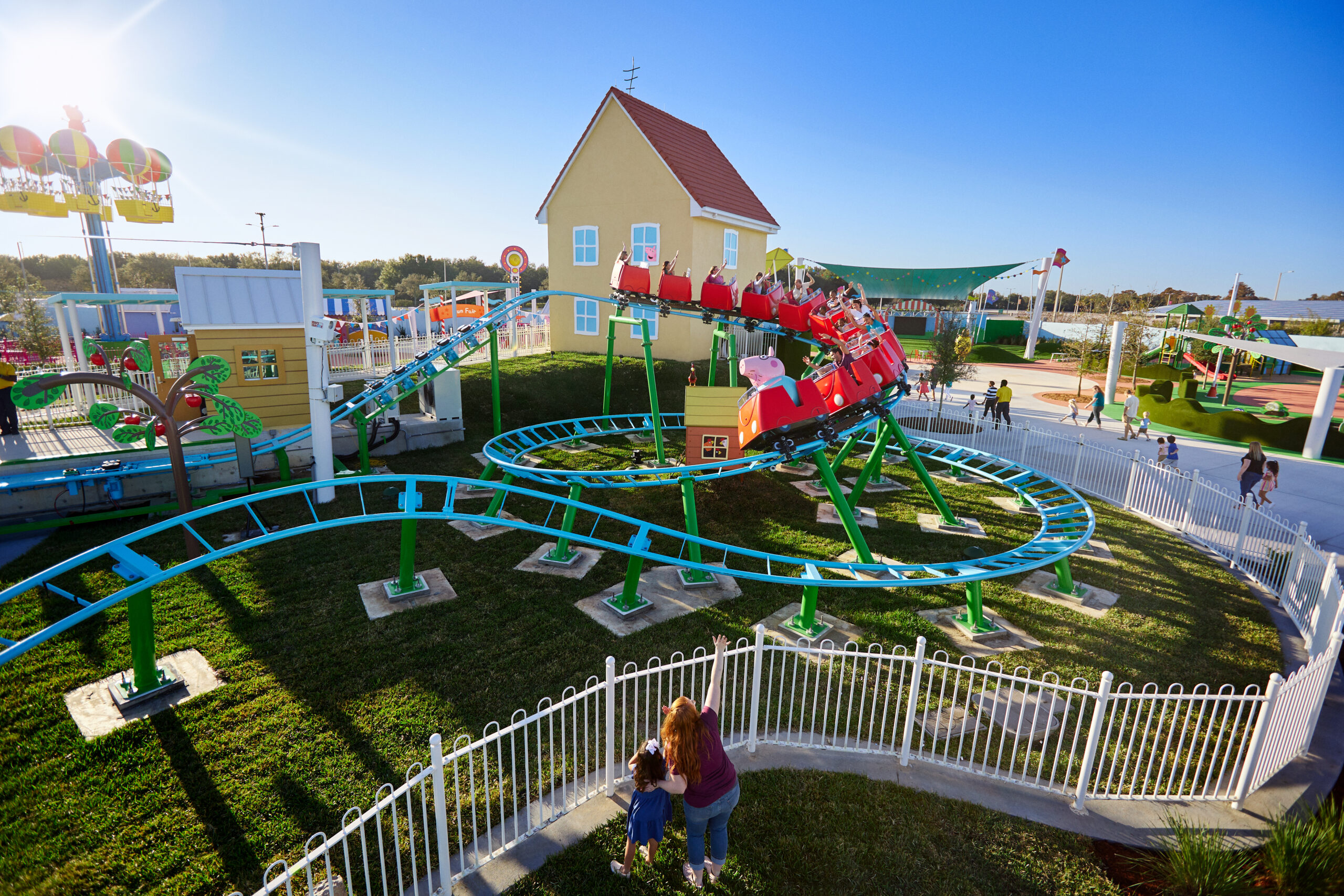
“If you look at what was purchased the last 20-30 years, especially during the coaster wars, there was so much investment in ‘kiddie stuff’ at 36 inches that were small coasters, and then coasters jumped up to the more thrilling rides – the era of world record breakers and funky things like Son of Beast,” he said. “The family coaster sort of sat in the middle of all of that. The market for family coasters was also compounded when some of the standards changed, and many coasters like the Arrow suspended and Arrow Mine trains had their minimum heights bumped to 46 or 48 inches. It pushed those coasters out of their role as the first ‘big’ coaster for a lot of people.”
“More recently, I think both in the U.S. and European markets, there’s just this realization that we need a coaster that does multiple things now. In the 70s or 80s, if you added a coaster it’d get interest, but now you have to have a marketable attribute attached to it,” Sandy continued. “You have to have something that, if it’s on reels or TikTok, that it looks cool and has a neat feature. We [Zamperla] certainly have come out with, and others have too, these broad appeal family coasters, and they’ve got a hook on them. They’ve got stories that the marketing team can share but they also offer ride experiences that are thrilling enough to really capture the interest of older riders. But they’re not too much of that younger audience won’t get a lot of it too.”
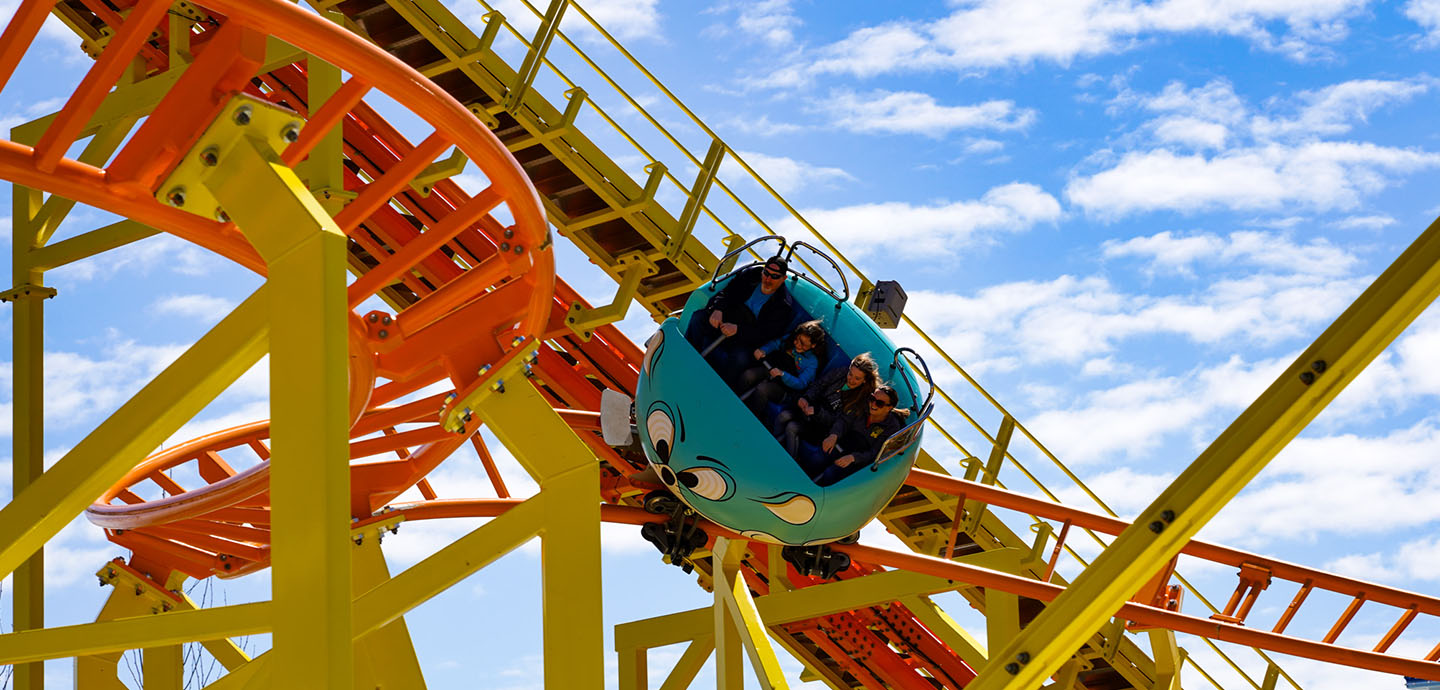
Wild Mouse at Cedar Point
As the modern family dynamic – age gaps between children have increased over the years – changes over time, the multi-generational aspect is a major selling point for these new coasters.
“Whether you’re talking an age gap like preschool and elementary school, or elementary school and middle school, you have to work harder to find attractions that you can get both of those kids and their parents or grandparents happy with, to draw all of them in,” Sandy said. “With family coasters specifically, we’re creating ride experiences that really speak to a wide range of people, but they’ve also got that really good hook on them.”
Even parks long known for their “thrill” coasters have begun to embrace family coasters, and a perfect example is Cedar Point, who opened Wild Mouse as an anchor attraction of their new Boardwalk area in 2023. Prior to the addition of Wild Mouse and its minimum 42″ height requirement, the park’s coaster collection had two roller coasters with a 36″ height requirement – Wilderness Run and Woodstock Express, and the rest of the roller coasters had at least a 48″ height requirement.
“A coaster like Wild Mouse really expands Cedar Point’s ridership reach instead of making their coasters either ‘just for kids’ or ‘just for thrill seekers,’ Sandy said. “I don’t really see Wild Mouse as being a standalone buy. It was really part of the transition Cedar Point has made made to grow their length of stay and to grow the diversity of their audience.”
The “New Generation” of Family Coasters
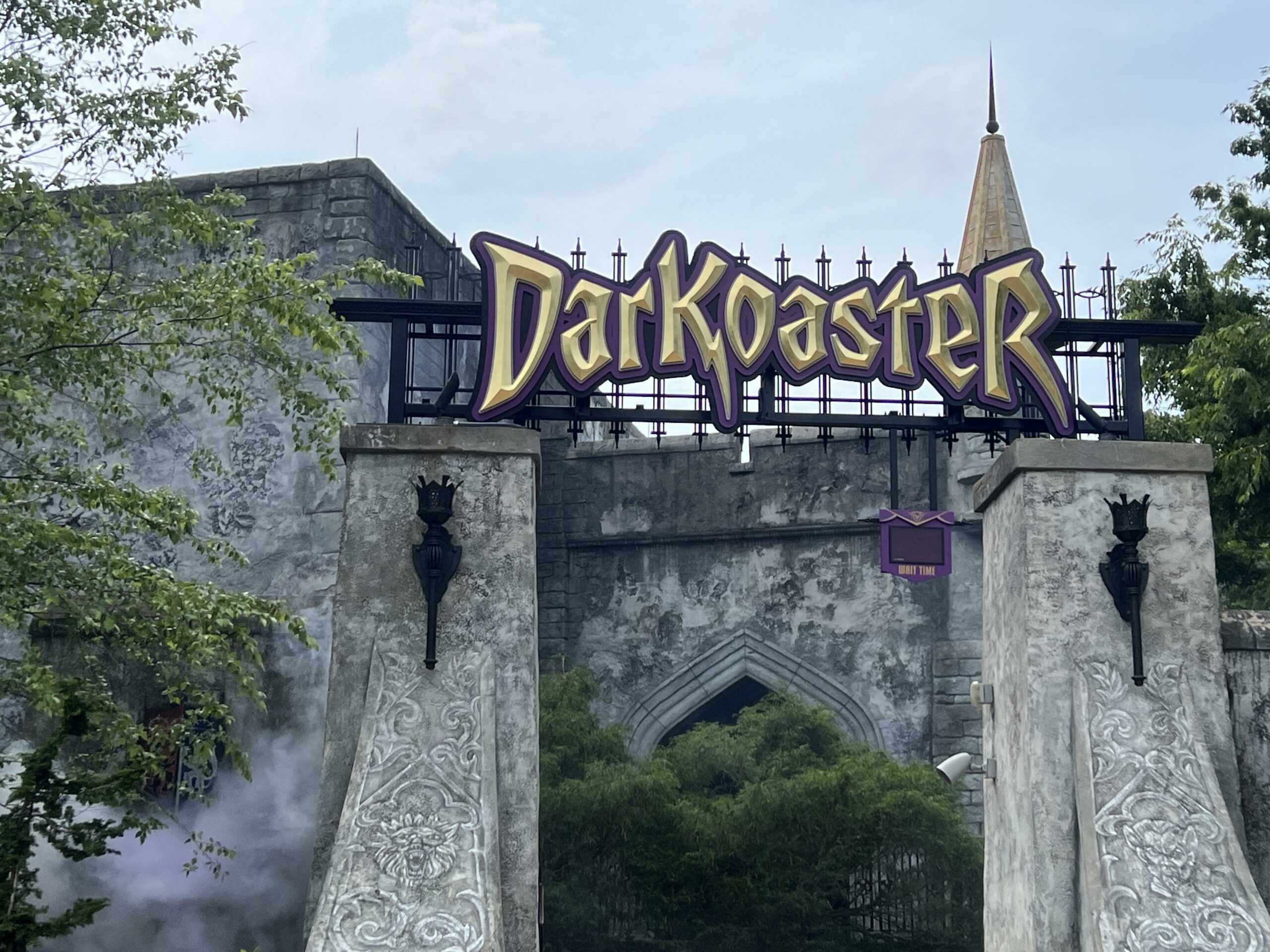
DarKoaster at Busch Gardens Williamsburg
In recent years, it’s not just “dragon wagons” and SBF-Spinners that make up what a “family coaster” can be. 2022 gave us the debut of Daddy Pig’s Roller Coaster at Peppa Pig theme park – which featured both a lift and a launch. In 2023, we saw the opening of Busch Gardens Williamsburg’s DarKoaster, the Kid Flash racing P’Sghetti Bowls from Skyline Attractions at both Six Flags Over Georgia and Six Flags Fiesta Texas, and the launched Snoopy’s Racing Railway at Canada’s Wonderland. (And not even considered as a “family” coaster on RCDB, Cedar Point’s Wild Mouse and its 42″ height requirement falls solidly into the category for us!) 2023 also gave us the announcement of Rocky Mountain Construction’s “Wild Moose” concept, certain to be the next great family model when one is eventually sold and built.
In 2024 alone, there are some incredible custom-designed family coasters that will open later this year, from manufacturers across the industry. Not only are these coasters designed with families in mind, but even the most hardcore of enthusiasts won’t have to cringe when getting their +1, because at their core, all of these roller coasters look like a ton of fun.
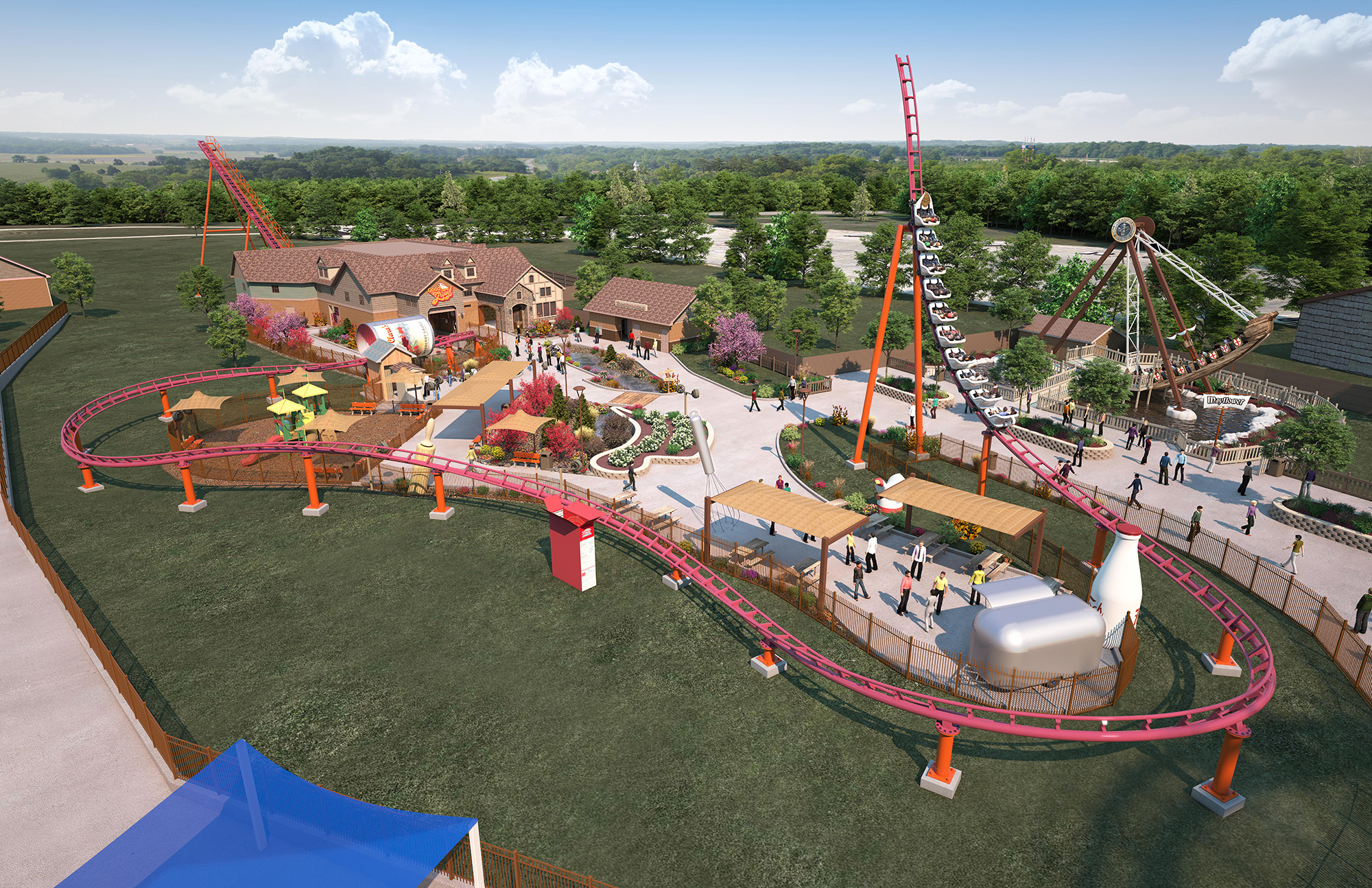
Good Gravy at Holiday World
We’re getting a family wooden coaster from the Gravity Group – the first in the United States in five years! – in Bobcat at Six Flags Great Escape, a pair of adorably-themed family boomerang coasters from Vekoma with Good Gravy at Holiday World and Snoopy’s Soap Box Racers at Kings Island, the first-ever indoor (and family coaster) design from Rocky Mountain Construction with Fire in the Hole 2.0 at Silver Dollar City.
Hot Wheels Boneshaker from Chance Rides at the new Mattel Adventure Park will be an amazingly themed family coaster, and even Swiss ride manufacturers Bolliger & Mabillard, long known for their thrilling coaster prowess in the United States, are entering North America’s family coaster market with the additions of Penguin Trek at SeaWorld Orlando and Phoenix Rising, just down I-4 at Busch Gardens Tampa.
Bringing The Family Together
For Sandy, who in addition to selling roller coasters, is a dad with two daughters who also enjoy roller coasters, there is a feeling that the family coaster resurgence is critical for the industry to survive.
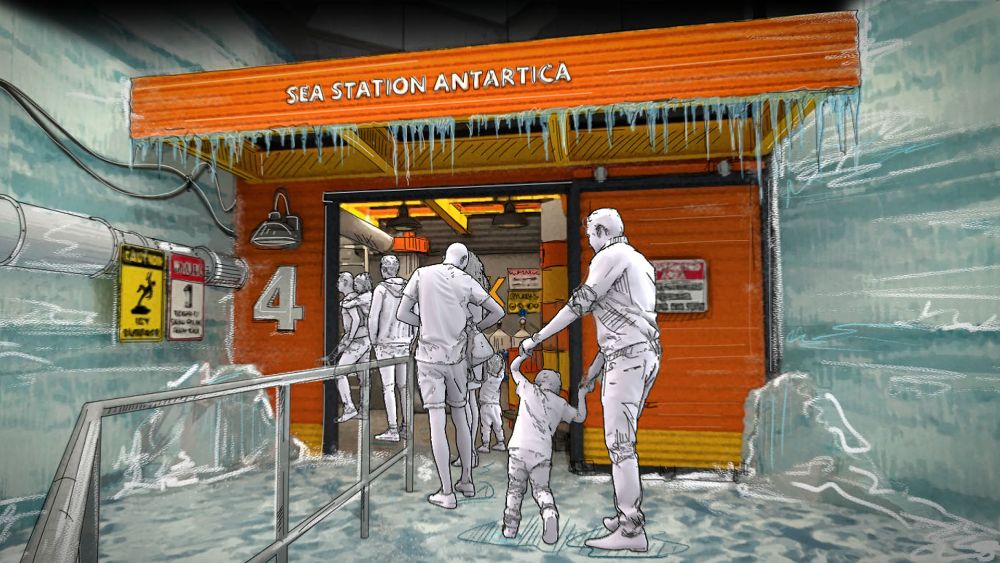
Concept Art for Penguin Trek at SeaWorld Orlando
“If you think big picture, amusement parks don’t compete against other parks. They compete against video games. They compete against zoos. They compete against people’s availability of time. When you’ve got kids, you’re maybe doing travel sports, or school plays, or musical instruments. It’s all those things that work for family time, because it can certainly be challenging for time together,” he said. “I think family coasters are wonderful, because it makes park visits with my daughters who are now seven and 12, much more enjoyable because it gives both of them things to do.
“For my oldest daughter, she won’t ride everything, but she’ll ride a lot, and the new generation of family coasters give her something that is a little higher on the thrill scale,” Sandy added. “But they’re still accessible for my youngest daughter, who is ‘stubbornly short’ and under 48”. If she was solely in a binary position of thrilling coaster vs. kiddie coaster, she’d be pretty bored going to amusement parks for a few years now. Because we’ve got new coasters like Wild Mouse and others that have that shorter height restriction of 42 inches, it allows her to do a wider variety of things.
“Honestly, having this is what’s brought me back much more as a consumer and bringing my family to the parks. It’s because we do have something for everybody. I really think that is critical as an industry when we think about how do we compete, how do we be successful, thinking of new directions like that’s very important.”
What do you think of the family coaster renaissance in North America? Which of 2024’s new family coasters are you most excited to ride? Let us know in the comments below!

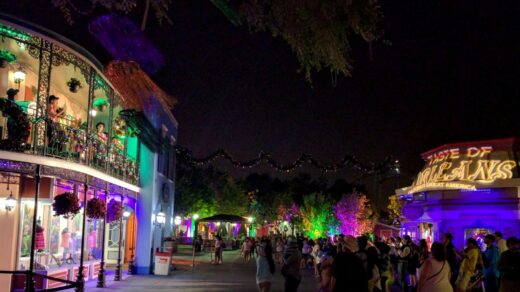
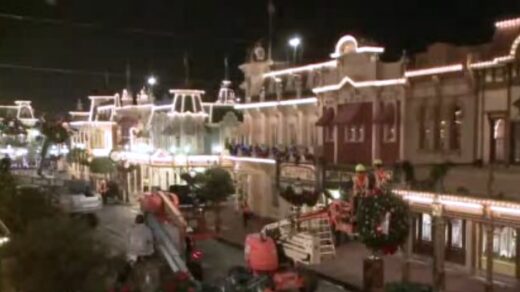
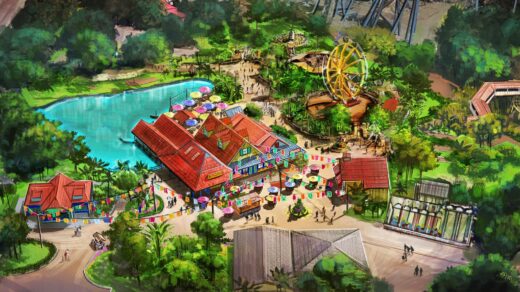





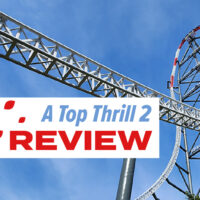
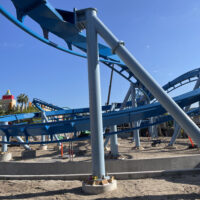




In 2011 Quassy Amusement & Waterpark debuted Wooden Warrior, which set the stage for a resurgence in wooden family coasters. Designed by The Gravity Group, the ride was also the first in North America to feature GravityKraft’s Timberline train. Coaster enthusiasts and park owners were quick to visit Quassy to see the ride and state-of-the-art train. Several new family coasters followed in the years following, much to the credit of the success of Wooden Warrior.
@Ron Gustafson — great shoutout. I’ll include it in there!